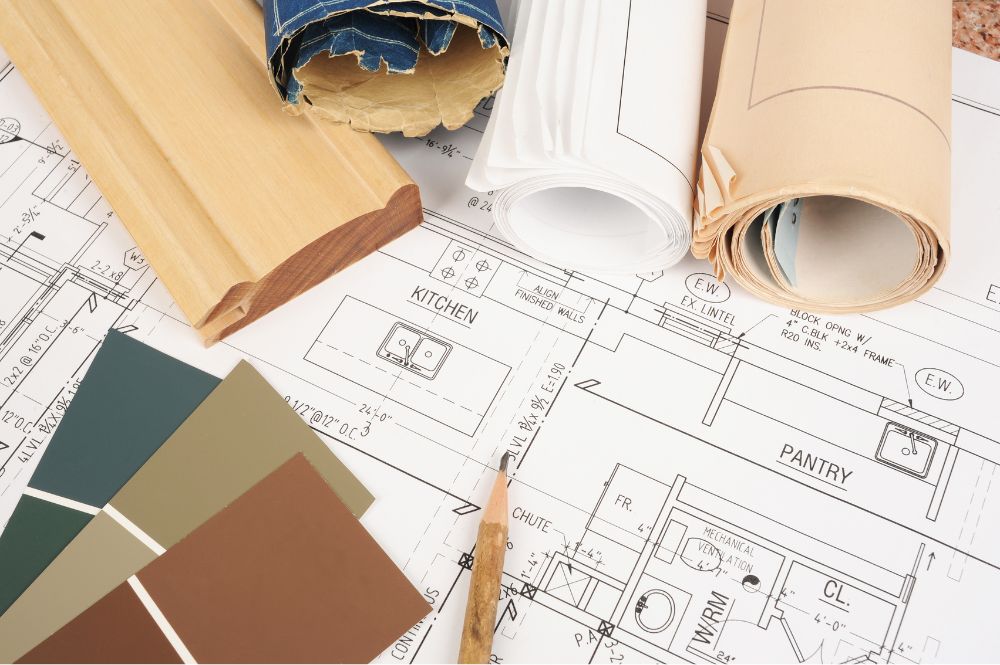
How to Patch Drywall and Fix Nail Holes Like a Pro
Because holes in your walls aren’t a great conversation starter.
Whether it’s nail holes from wall décor, dents from moving furniture, or minor drywall damage, patching and fixing imperfections is easier than you think! With the right tools and techniques, you can make your walls look smooth and brand new again—without hiring an expensive professional.
Here’s your step-by-step guide to patching drywall and fixing nail holes like a pro.
Part 1. Gather Your Tools & Materials
Before you start, make sure you have the right supplies.
- ✔ Spackling paste or joint compound – Fills small holes and creates a smooth finish
- ✔ Putty knife – Helps spread and smooth the filler evenly
- ✔ Sandpaper (fine-grit, 120-220) – Used to blend the patch into the wall
- ✔ Primer & paint – Covers the patch and blends it into the existing wall color
- ✔ Drywall patch kit – Needed for larger holes (bigger than a quarter)
- ✔ Microfiber rag or tack cloth – Removes dust before painting
🚨 Helpful Tip: Imagine your wall as a clean canvas—before repairing, make sure it’s dust-free so the filler adheres properly.
Part 2. Fixing Small Nail Holes (Under the Size of a Dime)
Small nail holes are quick and easy to repair—just a few simple steps.
Step 1: Clean the hole and surrounding area
🔹 Use a microfiber cloth to remove dust and dirt—a clean surface allows the filler to bond properly.
Step 2: Apply spackling paste
🔹 Use a putty knife to scoop a small amount of spackle and press it directly into the hole.
Step 3: Smooth out excess filler
🔹 Hold the putty knife at an angle and scrape off excess spackle, leaving a flat finish.
Step 4: Let it dry completely
🔹 Follow drying time instructions on the product (typically 1-2 hours).
Step 5: Lightly sand the patch
🔹 Use fine-grit sandpaper (120-220 grit) to smooth out the patched area.
Step 6: Prime and paint
🔹 Apply primer first, then touch up with matching paint to blend the repair.
🚨 Bonus Tip:
If you used too much spackle, lightly sand the edges to soften any raised areas.
Part 3. Repairing Larger Holes (Bigger Than a Quarter)
For larger holes, a drywall patch kit provides extra reinforcement for a seamless fix.
Step 1: Clean the hole and remove loose drywall
🔹 Use a rag to remove debris, and peel off any loose drywall edges.
Step 2: Apply a drywall patch
🔹 Peel the backing off a self-adhesive drywall patch and firmly press it over the hole.
Step 3: Apply joint compound
🔹 Use a putty knife to apply a thin coat of joint compound over the patch, extending beyond its edges for blending.
Step 4: Let it dry completely
🔹 Wait about 24 hours before moving to the next step.
Step 5: Sand the surface
🔹 Use fine-grit sandpaper to remove bumps and ridges until the patch is flush with the wall.
Step 6: Apply a second coat if needed
🔹 Apply another thin layer of joint compound, dry, and sand again.
Step 7: Prime and paint for a perfect finish
🔹 Prime the area before painting to prevent discoloration and ensure a smooth blend.
🚨 Bonus Tip:
If the patch sticks out more than the rest of the wall, sand the edges more for a natural blend.
Final Thoughts
Patching drywall and fixing nail holes is one of the easiest home repairs—but getting it right means paying attention to detail. When you properly fill, smooth, and blend imperfections, the result is flawless and nearly invisible.
With this guide, you can confidently repair minor wall damage—and keep your walls looking fresh and professional for years to come!
